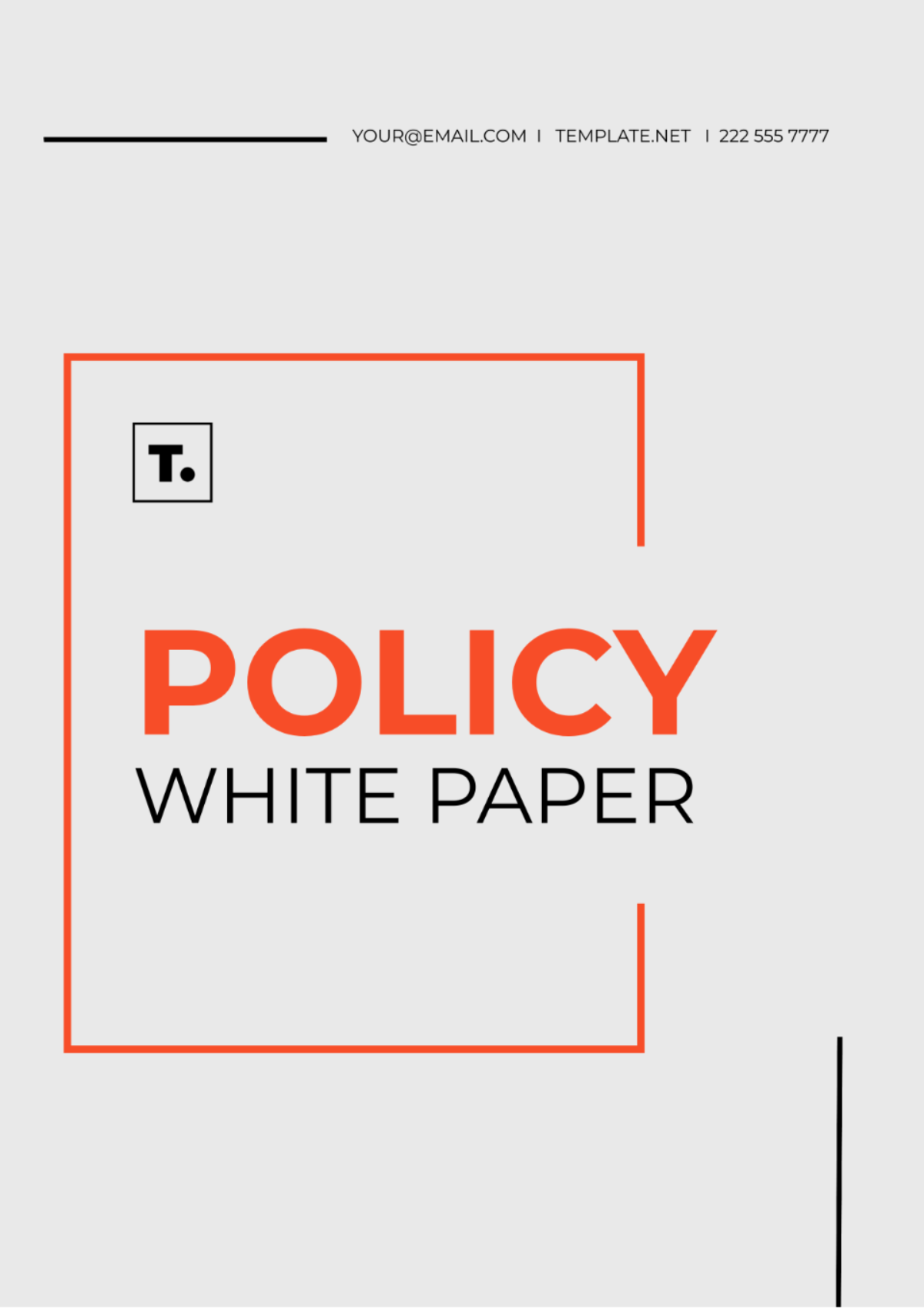Policy White Paper
Advancing Public Policy: A Comprehensive Proposal
Authored by: [Your Name]
Company Name: [Your Company Name]
Date: [Date]
I. Introduction
In this section, provide an overview of the policy issue or initiative being addressed by the white paper. Describe the significance of the issue and its impact on [Your Target Audience]. Include a summary of the proposed policy solution or recommendations.

II. Background and Context
A. Problem Statement
Outline the specific problem or challenge within the area of public policy.
Provide statistics, data, or evidence to support the severity and scope of the issue.
B. Policy Landscape
Review existing policies, regulations, and initiatives related to the issue.
Identify gaps or shortcomings in current policy approaches.
III. Analysis
A. Stakeholder Analysis
Identify key stakeholders involved in or affected by the policy issue.
Assess their interests, perspectives, and potential impact on policy outcomes.
B. Policy Options
Present alternative policy options or approaches to addressing the issue.
Evaluate the strengths, weaknesses, opportunities, and threats (SWOT) of each option.
IV. Recommendations
A. Proposed Policy Solution
B. Implementation Plan
Timeline:
Conduct stakeholder consultations and research within the first month.
Develop a policy framework and complete feasibility studies within three months.
Present draft policy to relevant committees for review and feedback over the following two months.
Finalize policy, secure approvals, and commence implementation within six months.
Responsibilities:
Responsibilities | Key Entities |
|---|
[Your Department] | Lead policy development and oversee implementation |
[Government Agencies] | Collaborate to ensure alignment with existing policies |
[External Experts/Consultants] | Provide specialized knowledge and support |
Resources:
Allocate the budget for research, consultations, and implementation.
Assign dedicated staff for analysis, drafting, and oversight.
Invest in necessary tools for data analysis and communication.
Communication:
Regular meetings to keep [Your Company Name] staff informed.
Utilize press releases, social media, and public forums.
Monitoring:
Define metrics to measure effectiveness and stakeholder satisfaction.
Periodically assess progress and make necessary adjustments.
Implement mechanisms to solicit stakeholder input.
Contingency:
V. Benefits and Impact
A. Anticipated Benefits
B. Impact Assessment
Evaluate the potential economic, social, and environmental impact of the policy solution.
Consider both short-term and long-term effects on stakeholders and communities.
VI. Conclusion
Summarize the key findings, recommendations, and implications discussed in the white paper. Reinforce the importance of addressing the policy issue and implementing the proposed solution. Encourage [Your Target Audience] to take action or support the policy initiative.
VII. References
Include a list of all sources cited throughout the white paper, following a standardized citation format such as APA or MLA.
White Paper Templates @ Template.net































